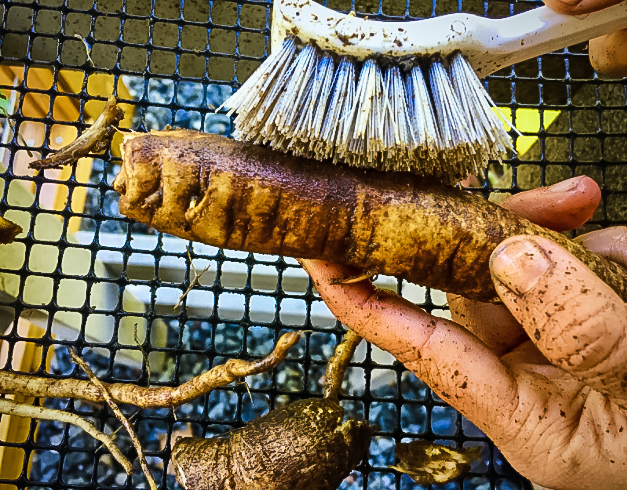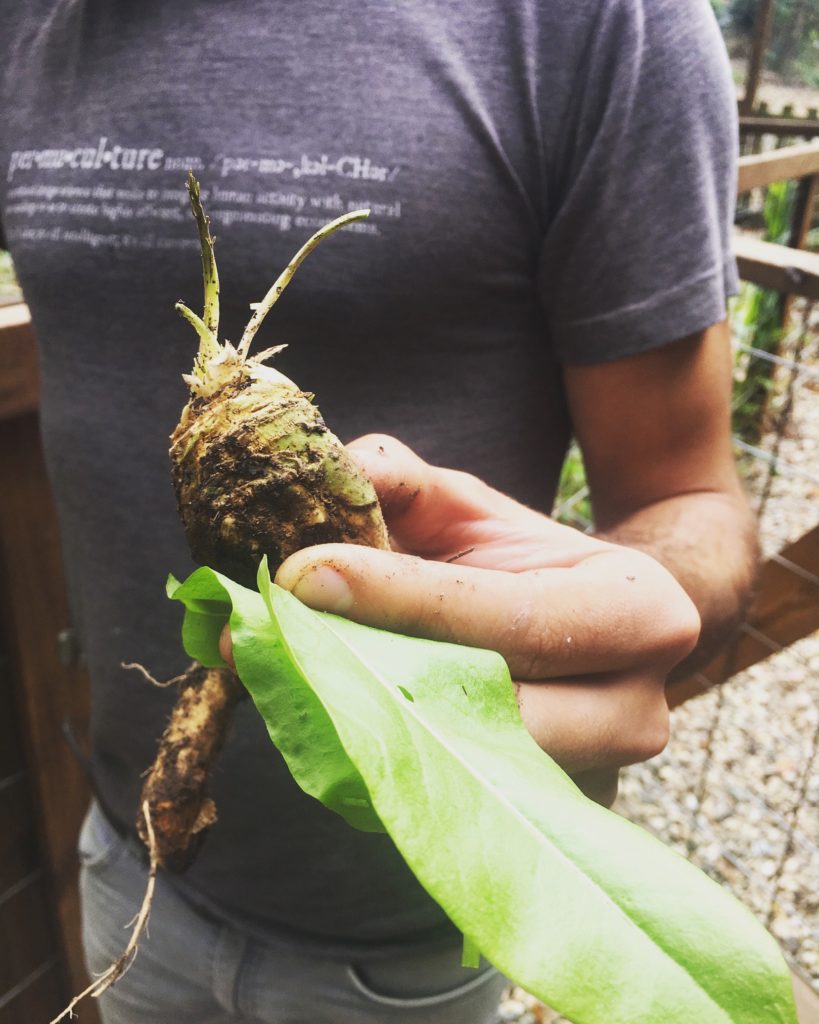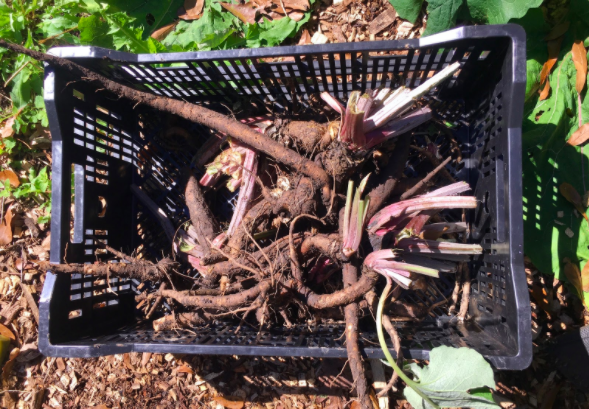
Burdock is one of a multitude of roots harvested for food and medicine in late autumn and early winter.
Generally speaking, wherever you may live, it’s ‘game on’ once plants have undergone a solid frost or two.
In addition to seasonal changes in light, cooler temperatures are a primary cue for plants to enter dormancy. During this period, many plants lose their leaves and shift from growth mode to winter survival mode. And, as part of this process, plants shift the manner in which they store energy. This means that sugars and other forms of energy previously produced and stored in leaves and other plant tissues are sent further down the plant for use and storage over winter. In the case of most herbaceous perennials and root vegetables, this vital energy is stored primarily in the roots.
Since we’re always aiming to coordinate harvest time with peak potency and flavor for both medicine and food, if using the root is the focus now is the time to do so. Aside from harvest time, it’s also important to consider site conditions and safety when harvesting roots. Because roots are designed to take up nutrients and water from the soil that surrounds them, they’ll also absorb any chemicals present within their reach. You’ll want to be sure the roots you’re harvesting are from an area that’s free and clear of toxic chemicals. Of course, one of the best ways to ensure the safety of your food and medicine is by growing it at home as part of a regenerative, permaculture-based landscape system.
There are a wide variety of common edible and medicinal root vegetables, biennials and herbaceous perennials that you can easily grow at home. Many beneficial plants that are considered ‘weeds’ by many might already be present in your landscape, too. If so, now is the perfect time to dig them up to use fresh or dry for use in teas, tinctures and more!
One of my family’s favorite roots to grow for fall and winter harvest is horseradish. Aside from adding a welcome kick and flavor to a multitude of foods, horseradish is high in many nutrients (including Vitamin C!) and minerals, and has medicinal benefits that are particularly helpful during the cooler months. It’s a natural antibacterial and is packed with antioxidants and other compounds with cancer-fighting properties. It also aids with digestion, assists with circulation and, as an expectorant, can help clear mucus.

My family loves growing horseradish at home!
Another plant we love to grow for both it’s beauty, benefit to pollinators and medicinal properties is echinacea. Three species of echinacea are used in medicine, but Echinacea purpurea, known commonly as purple coneflower, is one of the most readily available species for growing at home as an ornamental or for medicine. Echinacea root has a multitude of benefits, and is widely used in teas, tinctures and more as an immune-boosting, anti-inflammatory supplement. Generally, for use in medicine, echinacea is harvested around 2-3 years of age. Since you’ll effectively be ending the plant’s life by harvesting its root, it’s always a good idea to plant in abundance and maintain a patch to ensure that you’ll always have some echinacea around for pollinators and future medicine.
In addition to plants commonly grown specifically for food, medicine or as pollinator-supporting ornamentals, it’s likely you might have some beneficial roots growing ‘wild’ in your landscape too. Dandelion and burdock are both sought-after medicinal plants whose roots are ready for harvest in autumn and early winter. In fact, Heather Lacy, our very own Shades of Green Nursery Manager and herbalism enthusiast, wrote an excellent blog piece on harvesting burdock root and preparing it for use as both food and medicine. You can read her piece here: https://shadesofgreenpermaculture.com/blog/harvest/burdock-the-medicinal-root/.

Burdock root is sought after for both medicine and food.
When discussing the theme of this week’s blog piece, another team member excitedly told me about their love of harvesting sassafras root this time of year for making a flavorful and energizing tea. There are so many wonderful roots that we can harvest now for use over winter and beyond! What are your favorite autumn and winter-harvest roots to grow for food or medicine? Let us know!